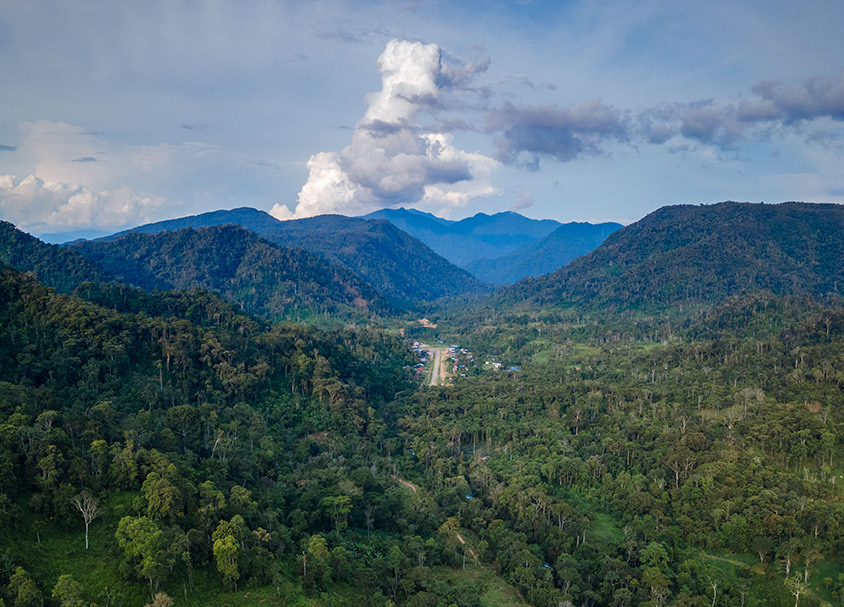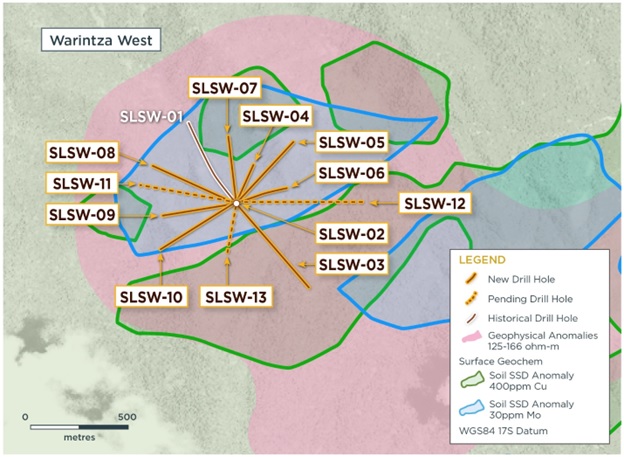
100% sustainable energy is the goal of environmentalists and lawmakers alike. However, a sticking point in achieving this goal is finding enough raw materials to create solar panels without damaging the environment. This is where Solaris Resources (TSX:SLS) (OTCQB:SLSSF) comes in. Solaris Resources is a copper mining company that specializes in finding and extracting copper, one of the key metals in the renewable energy transition, with minimal impact on the environment.
Solaris’ flagship Warintza project in Ecuador is operated according to the most stringent of ESG principles, without compromising the performance of the drill program. The company has just made its fourth discovery at the project of a broad porphyry deposit of at least 900m x 600 m and still open. This deposit is adjacent to and is not included in the Mineral Resource Estimate (MRE) from Warintza Central. The project is also set to be supplied by the Electric Corporation of Ecuador with low-cost, locally-sourced hydroelectric power.

Copper projects are set to power the increase in manufacturing for solar panels, however, new projects are scarce, and shortages threaten to drive up prices. Solaris Resources is working to alleviate this issue by mining copper in a way that is respectful of the environment. Those same shortages could even delay the transition to renewable energy.
Despite this, the growth in solar power has been exponential in recent years, with the market projected to grow by over a hundred billion dollars in the coming years.
Copper at the Crossroads
Renewable energy sources, such as solar and wind, rely on certain metals to create electrical currents. Copper is one of the key metals that is needed in large quantities to make these sources of energy work. Copper is one of the most important metals in this area, as it is not just critical to solar power but all of the energy infrastructure, putting it at an important crossroads.
The infrastructure that is needed to support renewable energy is also reliant on copper. Copper cables, for example, are essential for transmitting power from the solar panels to the places where it is needed. Copper is also used in batteries to store energy.
The material used to create solar panels is also important. Solar panels are made from a variety of materials, but the most common is polysilicon. Polysilicon is a type of plastic that is used to create solar panels. Polysilicon is made from a variety of materials, but the most common is silicon. Silicon is not suffering the same shortages as other minerals and metals.
The shortage of copper has also driven up the price of copper. If the price of copper continues to increase, it could delay the transition to renewable energy.
Mining Industry Scramble
Rising prices, tight markets, and environmental concerns have all contributed to the unprecedented scramble by the mining industry to bring new projects to production. The first way this is being done is through exploration. Exploration is when miners look for new deposits to extract copper from. This is an expensive and time-consuming process, so it is often only done when there is a good chance that a deposit will be profitable.
Another way that the mining industry is trying to bring new projects to production is by renegotiating contracts. When a company has a contract to produce copper, it may be able to renegotiate the contract to produce other materials as well. For example, a company may have a contract to produce copper, but if the price of copper increases, it may be able to renegotiate the contract to produce aluminum.
The mining industry is also trying to bring new projects to production faster by investing in new technologies. This is often done by investing in new mining equipment. For example, the mining industry is trying to bring new projects to production by investing in new hydraulic fracturing technology. hydraulic fracturing is a process that is used to break down rocks to extract minerals.
As the mining industry scrambles to bring new projects to production, it is important that the regulators are aware of these efforts and are able to provide the necessary permits and licenses. If the regulators are not aware of these efforts, it could lead to delays in the production of the new projects. Concerns in the United States that permitting laws are not changing fast enough to move in lockstep with growing investment in battery metal and copper mining projects also remain.
However, projects around the world, including the Warintza Project in southeastern Ecuador, are moving forward with a focus on sustainability and social responsibility. Solaris Resources is one of the few mining companies that have a long track record of operating according to the most stringent of ESG principles, without compromising the performance of its drill programs.



 Follow us on Twitter
Follow us on Twitter Become our facebook fan
Become our facebook fan










Comments are closed.